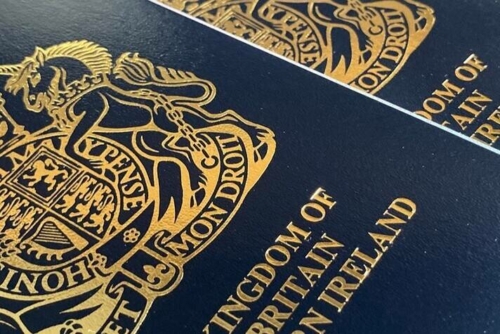Here are the 12 countries and territories on the travel Green List
Links on Head for Points may support the site by paying a commission. See here for all partner links.
The Government has announced the countries and territories on the initial Green List.
This applies only to England. Different rules may apply to those who live in Scotland, Wales and Northern Ireland but no announcements have been made yet.
International leisure travel will once again be permitted from the 17th May. To facilitate the move, the UK Government has announced it is moving to a traffic light system that will categorise countries based on:
- the percentage of people vaccinated
- the number of Covid-19 infections
- whether there are any variants of concern
- the reliability of the country’s testing and genomic sequencing facilities

Each country will be labelled ‘Green,’ ‘Amber’ or ‘Red,’ with varying entry requirements when you return to the UK.
12 countries and a number of territories are on the initial Green List.
The list will be updated every three weeks.
This is how the categories are defined:
Green countries: You will need to take a pre-departure test (can be lateral flow) as well as a PCR test on or before day 2 of your return into England. You will not need to quarantine unless or take additional tests unless your tests come back positive.
Amber countries: You will need to take a pre-departure test before returning to England and must quarantine at home for 10 days, taking a PCR test on day 2 and day 8. You can choose to take an additional PCR test on day 5 under the optional ‘Test to Release’ scheme, which allow you to end your quarantine early.
Red countries: You will be subject to a 10-day quarantine in a managed quarantine hotel, with testing prior to your arrival in England as well as on day 2 and day 8. You cannot reduce your quarantine period and must pay for the hotel.
In addition to the three traffic light restrictions the Government has also promised a ‘Green watchlist’. This will be used to to indicate countries that are currently categorised as Green countries but are likely to drop to Amber or Red shortly. No countries are on this list so far.
Which countries are on the Green List?
Here are the countries on the initial UK Government travel Green List.
- Australia
- Brunei
- Falkland Islands
- Faroe Islands
- Gibraltar
- Iceland
- Israel
- New Zealand
- Portugal, the Azores and Madeira
- Saint Helena, Ascension and Tristan da Cunha
- Singapore
- South Georgia and the South Sandwich Islands
For clarity, just because a country is on the Green List does not mean that you will be allowed to enter.
You will need to meet the local requirements regarding vaccination and/or testing.
The Government has confirmed that you should be able to access your vaccination status on the NHS app by 17th May. If not, or if you do not have a smartphone, a letter will be available – this can only be requested by calling 119 from 17th May.
Which countries are on the Red List?
Here are the countries on the Red List. Turkey, the Maldives and Nepal were added today. Anyone returning from these countries will be required to undertake 10 days of hotel quarantine.
- Angola
- Argentina
- Bangladesh
- Bolivia
- Botswana
- Brazil
- Burundi
- Cape Verde
- Chile
- Colombia
- Democratic Republic of the Congo
- Ecuador
- Eswatini
- Ethiopia
- French Guiana
- Guyana
- India
- Kenya
- Lesotho
- Malawi
- Maldives
- Mozambique
- Namibia
- Nepal
- Oman
- Pakistan
- Panama
- Paraguay
- Peru
- Philippines
- Qatar
- Rwanda
- Seychelles
- Somalia
- South Africa
- Suriname
- Tanzania
- Turkey
- United Arab Emirates (UAE)
- Uruguay
- Venezuela
- Zambia
- Zimbabwe
What countries are on the Amber list?
Any country or territory not listed above will be on the Amber list. This will require 10 days of home quarantine.
You can see the full Amber list on this page of gov.uk.
What are the cheapest covid testing providers?
You will not be able to use NHS testing facilities for travel: you must pay for private tests.
The cheapest PCR test at present is provided by Eurofins, from £44.90 for an at-home test kit.
You can compare all Government-approved covid testing providers on this helpful page of gov.uk.
Comment
British Airways CEO Sean Doyle said in a statement:
“We’re pleased that our customers are able to start travelling again to some countries, including Portugal, and we’ve put on additional flights from London, Manchester, Newcastle and Edinburgh to Faro to help people get moving.
What’s clear is that with high levels of vaccination in the UK being matched by other countries, we should see more destinations going ‘green’ before the end of June. It’s disappointing to hear that despite the stringent safeguards introduced for travel from ‘amber list’ countries, the Government is now suggesting travellers avoid these.
We cannot stress more greatly that the UK urgently needs travel between it and other low-risk countries, like the US, to re-start the economy, support devastated industries and reunite loved ones.“
We will update this article later with more information as it is released.









Comments (290)